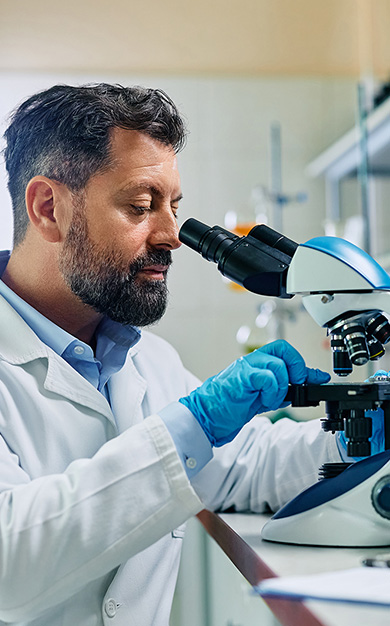Managing Your Age-Related Macular Degeneration
Featuring
Joshua Dunaief, MD, PhD
University of Pennsylvania’s Perelman School of Medicine
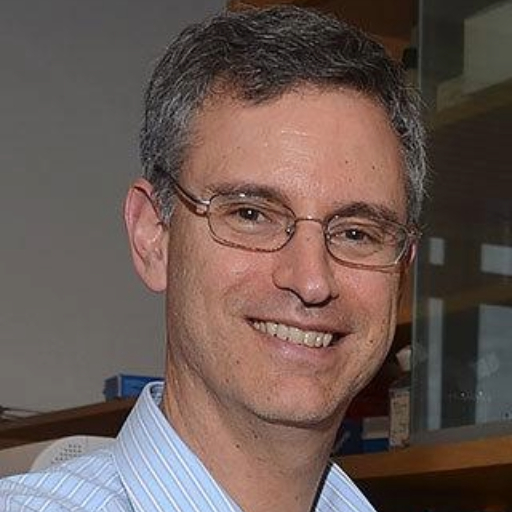

Joshua Dunaief, MD, PhD
University of Pennsylvania’s Perelman School of Medicine

The telephone discussion features Dr. Joshua Dunaief, of the University of Pennsylvania’s Perelman School of Medicine, who specializes in the study of age-related macular degeneration.
MICHAEL BUCKLEY: Hello, I’m Michael Buckley with the BrightFocus Foundation. Welcome to or welcome back to the BrightFocus Chat. Today’s topic is “Managing Your Age-Related Macular Degeneration.” Our guest today is Dr. Joshua Dunaief of the University of Pennsylvania’s Perelman School of Medicine. Dr. Dunaief may be a familiar name to some of you on the Chat. We’ve been really fortunate to talk to him several times over the past couple of years. He also writes some excellent content on our website,www.BrightFocus.org, where he discusses many of the issues that we’ll talk about today, and that’s how to diagnose, treat, and manage AMD. Let’s turn to our guest, Dr. Joshua Dunaief. Would you like to start off by telling us what you do at the University of Pennsylvania?
DR. DUNAIEF: Sure. Good to be with you today, Michael. I’m a retina specialist at the University of Pennsylvania at the Scheie Eye Institute, and I’ve treated over 1,000 patients with macular degeneration. I also do research on macular degeneration, trying to understand the causes and develop better treatments for the disease.
MICHAEL BUCKLEY: Well, that’s great. It’s interesting that you’re in both the research lab and also seeing patients in the medical clinic. I was wondering, what’s that like to kind of have both of those roles, and does one experience help you in the other?
DR. DUNAIEF: Yeah, it’s really helpful. My patients want to know that there’s research happening to improve treatments for macular degeneration, and then the people who work in my lab are really motivated to know that there are patients out there who are going to benefit from their hard work. And sometimes my patients will even visit the lab and talk to the students or vice versa; the students will come to the clinic and talk with the patients and hear what they’re going through, so that they can be even more motivated to work hard and try to develop some new treatments.
MICHAEL BUCKLEY: It’s a great experience for everyone. Let’s start off and talk about macular degeneration. A very big picture question: In your opinion and your research, is vision loss an inevitable part of aging?
DR. DUNAIEF: No, it’s not, fortunately. Even for people with macular degeneration, many patients keep good vision for their whole lives. They’re able to read. Many are still able to drive for their whole lives. In the early stage of the disease, patients can be asymptomatic; they’re just detected through an eye exam where the ophthalmologist sees little dots in the retina called “drusen.” Drusen is a German word that means “pebble.” It’s as if the patients had little tiny pebbles in the eye. And again, these people are often not symptomatic—they can see very well—but the presence of the drusen indicates that they’re at somewhat increased risk for vision loss at some point in the future. It doesn’t mean that they’re definitely going to lose vision—and, in fact, many don’t lose vision, especially if they maintain a healthy lifestyle. It’s been shown that people who eat a healthy diet, don’t smoke, and exercise can decrease their risk of vision loss—and by a healthy diet, I mean lots of fruits and vegetables (kind of what you would expect) and fish (fatty fish like salmon) twice a week— and really trying to cut back on refined foods, highly processed foods, foods with a lot of sugar, meats, and animal products. All of the healthy things are that you eat the fruits and vegetables. The animal products, it’s really better to cut back on those.
MICHAEL BUCKLEY: It sounds like good advice from head to toe there. A lot of our listeners will hear their doctors, neighbors, or others talk about wet AMD and dry AMD. Those sound like such simple labels, but could you tell us a little bit about what is the difference between wet and dry AMD?
DR. DUNAIEF: Sure. Wet AMD means that blood vessels— abnormal blood vessels in the retina—leak fluid into the retina. The fluid accumulates, and that fluid distorts the retina, interferes with its function, and can eventually permanently damage the retina if the fluid remains there for weeks to months.
People with dry macular degeneration don’t have these abnormal blood vessels yet, but they are at an increased risk for developing the vessels at some point. Eventually, in some patients with dry macular degeneration, there is excessive production of a protein called vascular endothelial growth factor, or VEGF, and that VEGF promotes the growth of new abnormal blood vessels that leak and bleed, and that is when the patient develops wet macular degeneration—when the new blood vessels grow and leak and the fluid accumulates in the retina. This can be treated with injections of anti-VEGF drugs like Lucentis®, Eylea®, and Avastin®. Many patients have experienced this and know that their vision can improve or at least be stabilized after these injections.
MICHAEL BUCKLEY: That’s good. And kind of staying on that topic of different labels, if someone hears about geographic atrophy, is that the same thing as wet or the same thing as dry, or is geographic atrophy something else? Is that a third thing we should know about?
DR. DUNAIEF: Geographic atrophy is still dry, because new blood vessels have not grown and leaked, but it’s an advanced form of dry. The early stage of macular degeneration is always dry. It’s the drusen that I was talking about before—those little spots, those little pebbles in the retina. And then people with drusen can ideally just maintain their vision for their whole lives and maintain that classification of early macular degeneration, but some of them will progress to either wet macular degeneration or geographic atrophy. So, geographic atrophy is when a patch of retina dies. The vision cells—the photoreceptors—will disappear in a small patch of retina right in the center of the retina in the macula, and that will cause a little blind spot in the center of the vision, which can then expand over time. That is not wet macular degeneration. That’s geographic atrophy, but it can cause loss of central vision over time. There are some clinical trials that are testing drugs to try to slow or stop the progression of the atrophy.
MICHAEL BUCKLEY: Great. That’s very helpful. Dr. Dunaief, the different conditions that you just mentioned—is the vision loss associated with them ever reversible, under either wet AMD or dry or geographic atrophy? Are there any reverse…possibilities?
DR. DUNAIEF: Yes, there can be, Michael. In wet macular degeneration, where new blood vessels have grown and leaked and the fluid has accumulated in the retina, treatment with these anti- VEGF injections can cause the fluid to dry up. That restores the normal structure of the retina, and, in some patients, they’ll notice an improvement in their vision at that point. For patients with geographic atrophy, unfortunately, the patch of retina that has died does not grow back, so there is not going to be improvement in that sense, but patients can work with special optometrists called low-vision specialists who can give them bright lights and magnifiers that help them use the vision they do have.
MICHAEL BUCKLEY: It’s probably not a big surprise to you, but over the years in BrightFocus Chats, the number one most frequent question we get is about those injections that you spoke of a minute ago. People talk about some anxiety or logistical challenges with the injections. The question we get all the time is, is there any hope for fewer or less frequent injections or maybe an alternative to these anti-VEGF injections?
DR. DUNAIEF: Yes, there is, Michael. Currently, patients are getting injections every month or two with Eylea®, Avastin®, or Lucentis®, and the FDA is now looking at another drug called brolucizumab,* which looks like it can last longer. In clinical trials, it did well when given every 3 months, so that extends some hope that people will be able to get these injections less frequently, and this drug may be available even as soon as the end of this year.
MICHAEL BUCKLEY: That’s very encouraging. In your experience in your clinic, when you prescribe a regimen, you say often times it’s every month or two. In your experience, what helps people best adhere to that type of regimen? Or, conversely, when someone has trouble maintaining that type of adherence, why do you think that is?
DR. DUNAIEF: Well, it’s not so easy to come to a doctor’s appointment every month, especially for people who have impaired vision and aren’t driving anymore. It really helps to have a friend, a family member, or a rotation of friends and family members to accompany them to the appointments, especially since immediately after the injection, the vision is temporarily a little bit worse because of that procedure and all the cleaning that we have to do around the eye to minimize the risk of infection. So, having a companion come for the visit is so helpful for that reason. Also, it’s hard for many patients to listen to what a doctor has to say at the time of the visit, because it’s very frightening to come and see a doctor, and a lot of times it’s hard to remember what was said at the time of the visit. Having a companion in the room when the doctor is talking to help to recall what was said can be great. It can also be helpful to have a printout of instructions for after the visit in case a patient doesn’t recall exactly what the doctor said; they can refer to that printout.
MICHAEL BUCKLEY: I’m glad you mentioned bringing a companion or a printout. Are there any other suggestions you have for our listeners about how to make the most out of an eye doctor visit?
DR. DUNAIEF: Well, it is important to remember that these injections for people with wet macular degeneration are really helpful in maintaining the vision—the reading vision, central vision—in the long term. Several studies have shown that patients who are able to adhere to the injections and come back and get them at whatever frequency is recommended by the doctor do better in terms of maintaining their vision. So, it’s just keeping in mind that it’s very important to come back and get those injections at the recommended frequency; it can help motivate people to do that.
MICHAEL BUCKLEY: We have two questions that have come in from our audience I’d like to turn to. First, a listener from Pennsylvania is wondering, is there any particular type of sunglasses that would be best to either prevent macular degeneration or to maintain the best eye health possible once you’re diagnosed with AMD? I was wondering if you’d comment about sunglasses.
DR. DUNAIEF: That’s a good question. There is some evidence that long-term exposure to bright light might increase the risk of macular degeneration, so sunglasses have been recommended by ophthalmologists for a long time, and those glasses should be pretty dark for outside use. They can be gray-colored or brown or have a little yellow or orange tint in them, and there are some glasses that will change color—they’ll darken when you go outside. These lenses can be very convenient, because then you don’t have to carry a separate pair of glasses.
The only problem with those is that they don’t darken when you’re driving, so you would need to have a separate pair of sunglasses to put on when you’re driving. The reason that they don’t darken in the car is that they are darkened by ultraviolet light, which you get when you’re outside, but it’s filtered out by the windshield, so it doesn’t reach the glasses when you’re driving. For indoor use, some people find that yellow-tinted lenses help them see; they can increase contrast and make it easier to see and to read. It has to be determined on a per-person basis, so it’s something that an optometrist can work with patients to help determine whether that yellow color will help them see better.
MICHAEL BUCKLEY: That’s very, very helpful. We have another question from Tennessee that I believe is in the area that Dr. Dunaief has done some research. The listener says, “Should I not take iron supplements if I’m having AMD and I’m getting injections?” I was wondering if you could talk a little bit about iron supplements.
DR. DUNAIEF: Yes. I’ve been studying the toxicity of iron in the retina for about 15 years, and I think that it may contribute to macular degeneration. The reasons we think this are, first of all, when people get iron in their eye in an accident—sometimes a little piece of metal will get into the eye—that causes a rapid degeneration of the photoreceptors, the same cells that die in macular degeneration. So we know from that that the photoreceptors are very susceptible to iron toxicity. We also found that in post-mortem eyes—that is, eyes that have been donated at the time of a patient’s death—iron has accumulated in the retina in people with macular degeneration. So, for some reason, the disease promotes iron buildup, and we think this iron buildup, in turn, can exacerbate the disease.
So, getting back to the question, should people take iron supplements? Iron is really one of those things that you need enough of but not too much. You need iron to make red blood cells, and some people have too few red blood cells because they don’t have enough iron, so they become anemic; those are most often menstruating women, because blood loss causes a lot of loss of iron. After menopause in women, and in men, there’s no more loss of any iron, so whatever iron we eat continues to get stockpiled in our bodies.
One common mistake would be for a woman who’s taking iron to avoid iron deficiency when she’s menstruating to continue taking those supplements after menopause when she’s no longer losing the blood and no longer losing the iron; then she could be stockpiling a lot more iron than she needs, and it’s possible that those stockpiles of iron could contribute to macular degeneration and other diseases associated with aging and inflammation like, perhaps, Parkinson’s, Alzheimer’s, arthritis. Again, it’s important to have a happy medium—to have enough iron but not too much.
There are a couple of blood tests that help with that. One is just checking the number of red blood cells to make sure that you’re not anemic, and then there are measures of iron levels: one is called ferritin, which is an indicator of total body iron stores; and another is transferrin saturation. These tell us how much iron is in the blood and in the body, and a doctor can help guide patients to let them know whether they have enough or perhaps too little or too much; that can help guide whether supplementation might be needed.
MICHAEL BUCKLEY: Thank you for such a helpful answer. I’d like to stay on that topic of supplements for a minute. I know that you and other BrightFocus Chat guests have mentioned something called the AREDS 2 formula, and I’d like you to explain that. But just in sort of the overall topic of supplements, it feels like when people go into these supplement aisles at a supermarket or at a drug store, it seems really overwhelming, often times very expensive. I was wondering if you could talk a little bit about the supplements that are good for macular degeneration and kind of help people navigate that sort of Wild West of the supplement aisle.
DR. DUNAIEF: Yeah, there really is quite a variety of supplements out there, and there’s only one that was shown in a large, NIH- sponsored study to be protective, and that’s called the AREDS 2 formula—A-R-E-D-S 2—which is marketed under the name PreserVision, like “preserves your vision” made by Bausch & Lomb. In the AREDS 2 study, it was shown that patients who had dry macular degeneration with a certain number of the spots—the drusen—had a 25 percent reduction in their risk of progression to the advanced form of the disease if they took the PreserVision— one pill in the morning and one in the evening. So, that’s really the only one that has strong clinical trial evidence that it’s helpful, and it turned out it was most helpful in people who didn’t have the antioxidants in those pills coming from their diet. So actually, I think really the best way to get these healthy antioxidants is to eat a diet that’s rich in fruits and vegetables and some fatty fish twice a week. Those foods contain not only the handful of antioxidants that are in the supplements, but hundreds of other antioxidants and micronutrients that are healthy for the eye and the body, in general.
MICHAEL BUCKLEY: Well, thank you. We have a question from a listener in California wondering, is there a common point in the AMD progression when somebody loses the ability to drive?
DR. DUNAIEF: Most often, it wouldn’t be in the early stage of the disease when they have just drusen. An exception would be if there’s a very large drusen right in the center of the macula, but usually that’s not the case. Usually, patients with drusen are not so likely to lose their driving vision. Much more likely would be the patients who have wet AMD or geographic atrophy, and driving vision is going to be legally defined by a certain visual acuity, which varies from state to state. It is important for people to take stock of what they can really see and be realistic about whether they’re going to be able to see that kid chasing the ball across the street, running out in front of their car, and also to be cognizant of the fact that it’s easier to drive under certain conditions—if the weather’s good—and in familiar places. It’s much harder to drive long distances or at night or in unfamiliar places. So, independence is very important to people, but I say to my patients, “You really wouldn’t want to put yourself in a position where you’ve hurt somebody because your vision wasn’t what it needed to be when you were driving.”
MICHAEL BUCKLEY: I agree. Dr. Dunaief, you made some excellent points about driving. In your experience in the clinic it would seem like a driving conversation would be very difficult, and it just seems connected to issues of loneliness and isolation and depression. As you work with your patients on their vision health, do you have tips or suggestions for how they and their caregivers can handle some of those challenges?
DR. DUNAIEF: Patient support groups can be wonderful. We have one at the Scheie Institute, University of Pennsylvania. Staying connected is really important. Social groups, religious organizations…it’s very important to maintain that social interaction. There is one other thing, Michael, that I wanted to mention that relates to depression and anxiety. There’s something that can happen to patients who lose some central vision that isn’t really talked about that much, and those are visual hallucinations, which is also called Charles Bonnet syndrome.
In the same way that somebody who loses an arm or a leg might still think they feel that arm or a leg—it’s called phantom limb syndrome—patients who’ve lost a lot of their central vision can have their brain substitute images for the input that they’ve lost from their eye. For example, patients might see faces or people or wallpaper patterns or animals and insects when they’re not really there, and then they don’t want to talk about it because they think that if they do, others will think that they’re crazy—that they’ve lost their cognitive faculties. But that’s really not the case. This is a common thing that occurs when patients lose a lot of their vision.
It’s as if the brain is bored and it’s just substituting these images. A lot of times, if people understand that this is common—it doesn’t mean that they’re going crazy—then the images become much less disturbing and a lot of times the images themselves are not unpleasant images; occasionally, they can be, but a lot of times they’re okay. So, I think it is important that people understand that.
MICHAEL BUCKLEY: That’s very helpful. It sounds like a great topic for people to mention to their family members and to their doctors. Getting on the topic of staying connected—exercise, staying connected to friends and family and community—we had questions here where people know they’re supposed to stay active and exercise but yet have some worry that maybe there are risks to that, such as chlorine in a swimming pool or a tennis ball hitting their eye. How does one balance staying active and exercising versus such things as chlorine in the pool or other risks?
DR. DUNAIEF: Sure. Important question. Chlorine in a pool isn’t going to damage the retina. It may cause some irritation on the surface of the eye, but that’s not going to increase the risk of macular degeneration. Actually, that brings up a little bit of a side topic that I want to hit, which is that dry eye is different from dry macular degeneration. Many patients will experience dry eye, which is when the tear film dries up and the eye becomes…you know, it will burn, and then sometimes there will be a reflex flood of tears after that and people may be told to put in artificial tears to treat that, but that’s different from dry macular degeneration in the back of the eye—totally unrelated.
With respect to getting back to exercise and the safety of exercise for patients who have lost some central vision, it is important to be even more careful not to fall; fall risk is increased. Fortunately, macular degeneration only affects the center of the retina. In the vast majority of people, the peripheral retina is okay, so patients are able to use their peripheral vision to help them navigate and make sure that they’re not bumping into things or tripping over things. There are ways to mark things in a household to make it safer—with bright tape on steps, for example—and there are occupational therapists who can be brought into a house to help advise patients who have lost some central vision on how to have the safest possible life. But it is important not to give up exercise— to do safe exercise under conditions that are not going to put you at an increased fall risk. Michael, you mentioned the pool. I think the pool is a great one. It’s a low impact situation where it’s not going to stress the joints, and the chances of bumping into something or tripping and falling are greatly minimized; then you can combine that with social by making it a group pool exercise activity.
MICHAEL BUCKLEY: Yeah. That’s great advice. We have about 5 minutes left in our conversation. We just want to get to a few more questions. When you mentioned dry eye, that got me thinking. Are there other common medical problems that either lead to macular degeneration, or does macular degeneration increase the risk of such things as diabetes or cataracts, glaucoma, and blood pressure? Is there any connection between AMD and those diseases or vice versa?
DR. DUNAIEF: For some of them, yes, especially high blood pressure; it’s a risk factor for wet macular degeneration. In general, systemic inflammation is a risk factor for macular degeneration. It was shown some years ago in blood tests that people who have systemic inflammation measured by a test called C-reactive protein, or CRP, have an increased risk of macular degeneration, and CRP levels are also a risk factor for heart disease. So, there is certainly a connection between systemic diseases, like heart disease, and macular degeneration in that inflammation can drive both of them—also neurodegenerative diseases like Alzheimer’s. Interestingly, patients who eat a plant-, fruit-, and vegetable-rich diet, with a reduction in simple sugars and a reduction in animal products, can lower their CRP levels. I think that it is likely to lower the risk of macular degeneration and other systemic diseases.
MICHAEL BUCKLEY: Great. Thank you.
DR. DUNAIEF: You also asked about cataracts and glaucoma. A cataract is clouding of the lens, which can be treated with surgery if the lens gets cloudy enough to block light from getting into the eye; that’s not associated with macular degeneration, but it is an age-associated condition. Glaucoma is damage to the nerve in the back of the eye that is often caused by high eye pressure, so that’s why eye doctors will be checking eye pressure at eye exams to make sure that you’re not at risk for glaucoma.
If you do have high eye pressure, they may treat it with eye drops to lower the pressure, and if those aren’t sufficient, then sometimes a laser procedure or even a surgery. But, again, glaucoma is not known to be associated with macular degeneration; they are two separate diseases.
MICHAEL BUCKLEY: Great, thank you. One more question kind of related to this. You talked about taking care of your vision and the progression of dry AMD. Is there something people can do day to day in their home to keep a close watch? I know there’s an app for everything these days. Are there things that people can do on a day-to-day basis at home the way we monitor other parts of our own health?
DR. DUNAIEF: Yes, sure. You should monitor your vision at home, and it’s important to do that one eye at a time, because if one eye develops wet macular degeneration, it might not be so noticeable because the other eye is compensating. So, cover one eye at a time and then look at a page of text like a computer screen or a newspaper or a magazine and just make sure that when you look at the center of the page, you’re able to see the whole page—there are no missing parts, no distorted parts. There’s also something called an Amsler grid, which is like a piece of graph paper that helps people to do this. There’s a little dot in the center of the grid that you can look at and then make sure that you can see all of the lines on the graph paper—that they’re not wavy or missing. And there are some apps that can do the same kind of thing where you look at the center of the screen and notice whether you see any waviness or distortion in the rest of the image on the screen.
MICHAEL BUCKLEY: Great. Dr. Dunaief, you’ve just been so helpful and so easy to follow. We really want to thank you for being so generous with your time. I was wondering if you had any kind of concluding thoughts for us, something “big picture,” maybe what you wish patients knew more of or your own perspective on the future of vision science or health or things that you’ve learned in your career—some sort of concluding remarks to help our audience.
DR. DUNAIEF: Sure, Michael. I just realized, also, I didn’t cover one thing you asked me about, which is diabetes.
MICHAEL BUCKLEY: Go ahead.
DR. DUNAIEF: Diabetes can also affect the retina like macular degeneration. Diabetes doesn’t increase the risk of macular degeneration, but it can cause some of the similar symptoms because the macula can be affected by something called diabetic macular edema, where blood vessels leak. And the diabetic retinopathy can also be treated with some of the same injections into the eye that block VEGF—Lucentis®, Eylea®, and Avastin®— because VEGF dries the leakiness of the blood vessels in diabetic retinopathy, too.
And then, just to sum up, you asked about any big-picture thoughts, I just want to reiterate that…I have been harping on this. I apologize if it’s getting a bit redundant, but the healthy lifestyle is just so important for diabetics, for people with macular degeneration, glaucoma, and really any disease—eating that diet that’s rich in fruits and vegetables. The diabetics do want to watch the very high sugar fruits—not too much bananas and watermelon, but the rest of them should be okay—and a little bit of nuts and seeds and a little healthy oil like olive oil and some fatty fish, and not too much of the other snack foods and what-not. Occasionally, we’ve got to enjoy those, but not too often because we’re really going to be a lot healthier if we do this, and we can really take our health into our own hands if we eat this way. I know this trend is really catching on in the U.S. now, but it’s not quite there, and we’re not quite doing it enough.
In the realm of medical science, there are a lot of exciting things going on. There’s a brolucizumab injection coming soon, which is going to decrease the frequency of injections, probably to once every 3 months. And there’s even gene therapy that could be given, in theory, just once and block these abnormal blood vessels by blocking VEGF for many years after one treatment.
These gene therapies are now in clinical trials in patients, and they are following on the heels of a very successful gene therapy project by a colleague of mine here at Penn, Jean Bennett, who over the course of the past 20 years was able to develop a way to deliver genes safely into the retina and restore vision in children who are born blind. This technology is now going to be transferrable to patients with much more common diseases like macular degeneration. It’s something that we’re going to see coming down the pike with more research. We also need to come up with a way to stop geographic atrophy—to stop the expansion of geographic atrophy—and we have some ideas about drugs and approaches that are either going to slow or stop the atrophy; it’s an area of very active research.
MICHAEL BUCKLEY: Well, that’s great. There are some really encouraging signs and an exciting time to be doing the research that you’re doing. On behalf of BrightFocus and today’s audience, Dr. Dunaief, I just want to thank you once again for being so generous with your time and so helpful. I think everybody today will come away with something to give them a little more information or a little more peace of mind. So, I just want to thank you so much for all that you do.
DR. DUNAIEF: Thank you, Michael, for the opportunity to reach all these patients in this discussion and excellent questions.
MICHAEL BUCKLEY: On behalf of BrightFocus Foundation, thank you very much.
* UPDATE: In October of 2019, the FDA approved Beovu® (brolucizumab). Learn more about this treatment.
This program is supported in part by educational grants from:




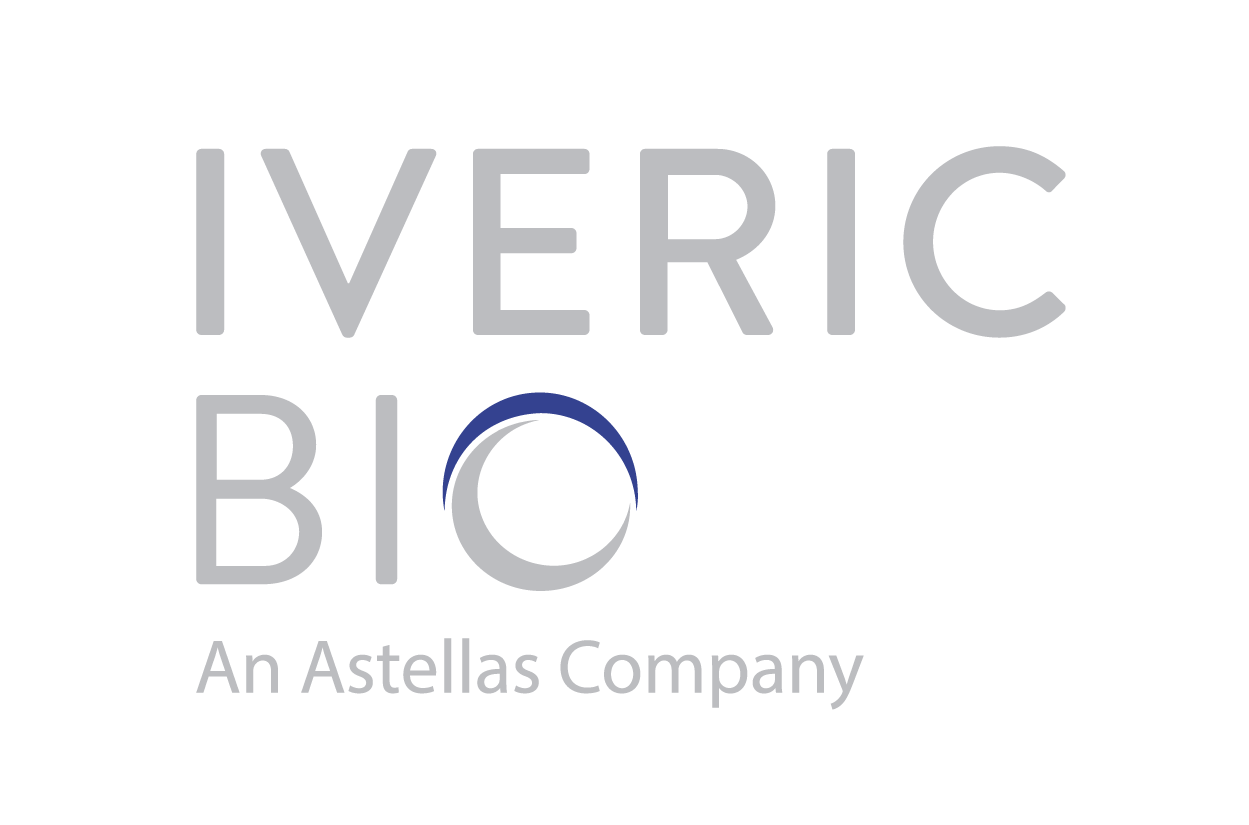


BrightFocus Foundation is a premier global nonprofit funder of research to defeat Alzheimer’s, macular degeneration, and glaucoma. Since its inception more than 50 years ago, BrightFocus and its flagship research programs—Alzheimer’s Disease Research, Macular Degeneration Research, and National Glaucoma Research—has awarded more than $300 million in research grants to scientists around the world, catalyzing thousands of scientific breakthroughs, life-enhancing treatments, and diagnostic tools. We also share the latest research findings, expert information, and resources to empower the millions impacted by these devastating diseases. Learn more at brightfocus.org.
Disclaimer: The information provided here is a public service of BrightFocus Foundation and is not intended to constitute medical advice. Please consult your physician for personalized medical, dietary, and/or exercise advice. Any medications or supplements should only be taken under medical supervision. BrightFocus Foundation does not endorse any medical products or therapies.

In recognition of National Caregivers Month, this episode explores the vital role of those who support individuals living with vision loss—whether family members, professionals, or volunteers.
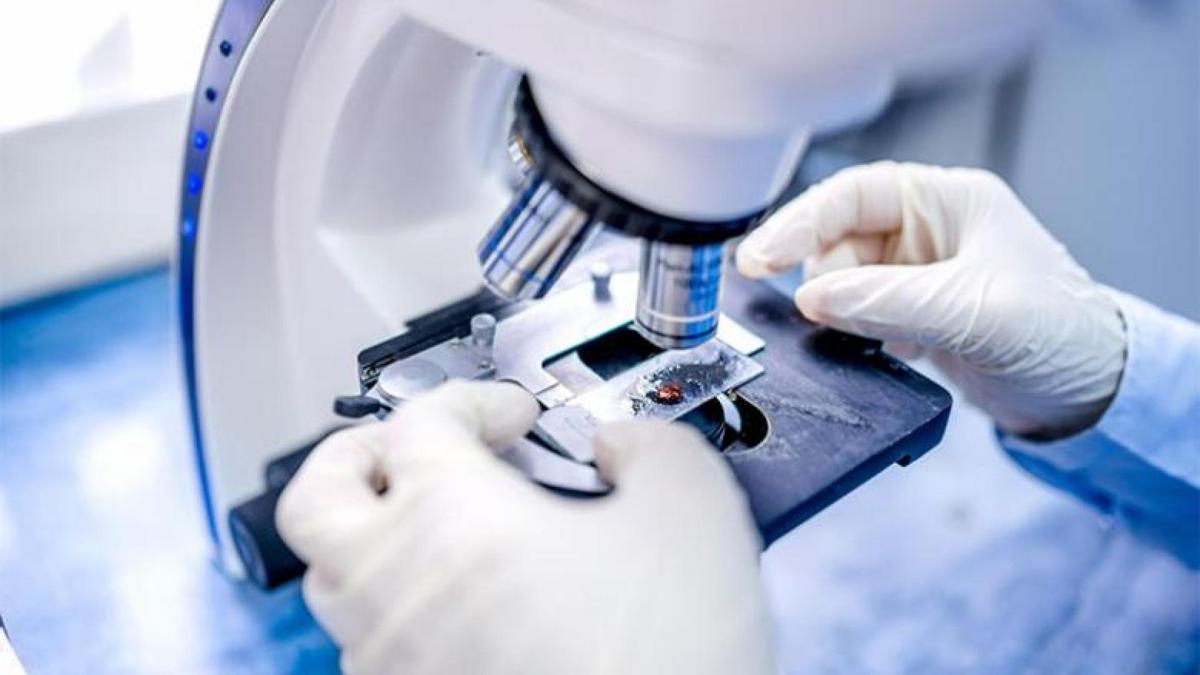
Dr. Jeffrey Stern and Dr. Sally Temple, Principal Investigators and Co-Founders of the Neural Stem Cell Institute, will explain what stem cells are and share the latest updates from clinical trials.
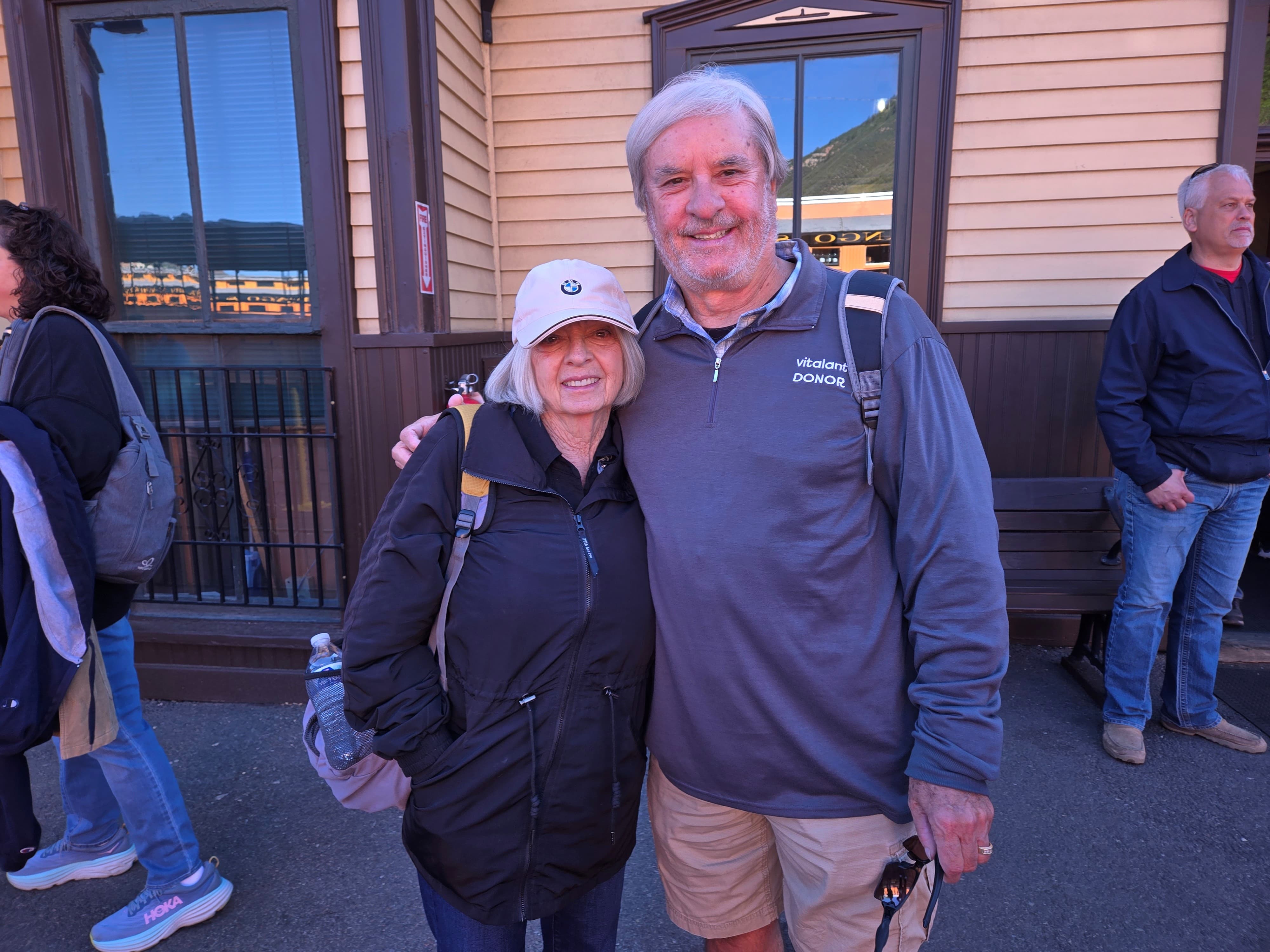
Dave and Leanna Palmer share their commitment to supporting Macular Degeneration Research.
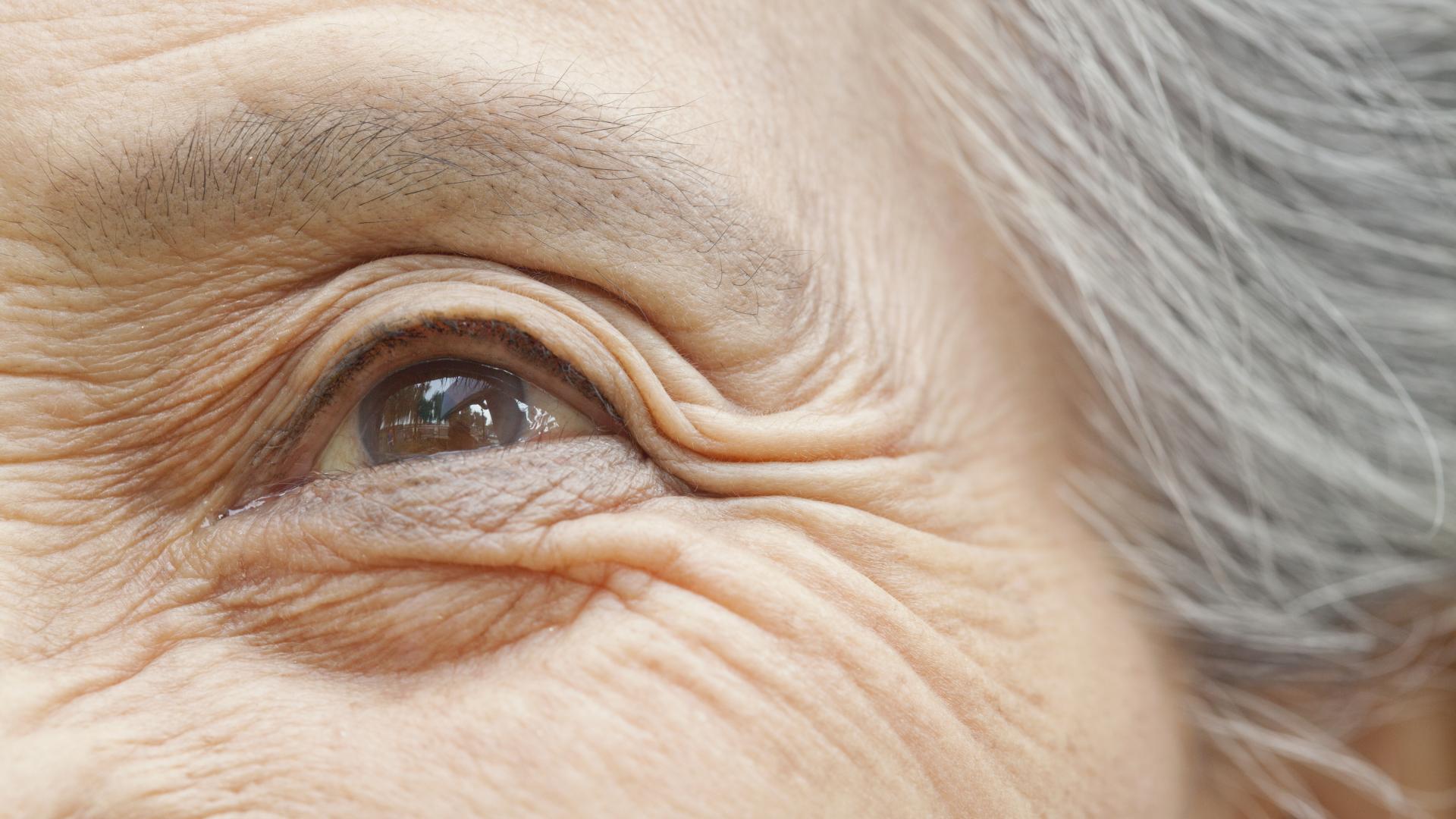
Join Dr. Sara Fard, a retina specialist at Illinois Retina Associates, as she explains the benefits of sustained GA treatment, including slowing the rate of vision loss, protecting retinal tissue, and supporting daily visual function.
Help Fight Macular Degeneration and Save Sight
Your donation helps fund critical research to bring us closer to a cure for this sight-stealing disease and provide vital information to the public.
Donate Today